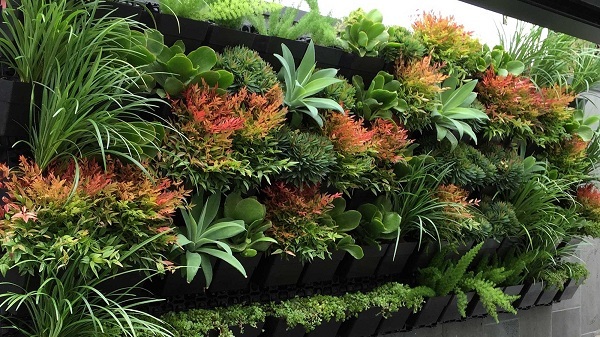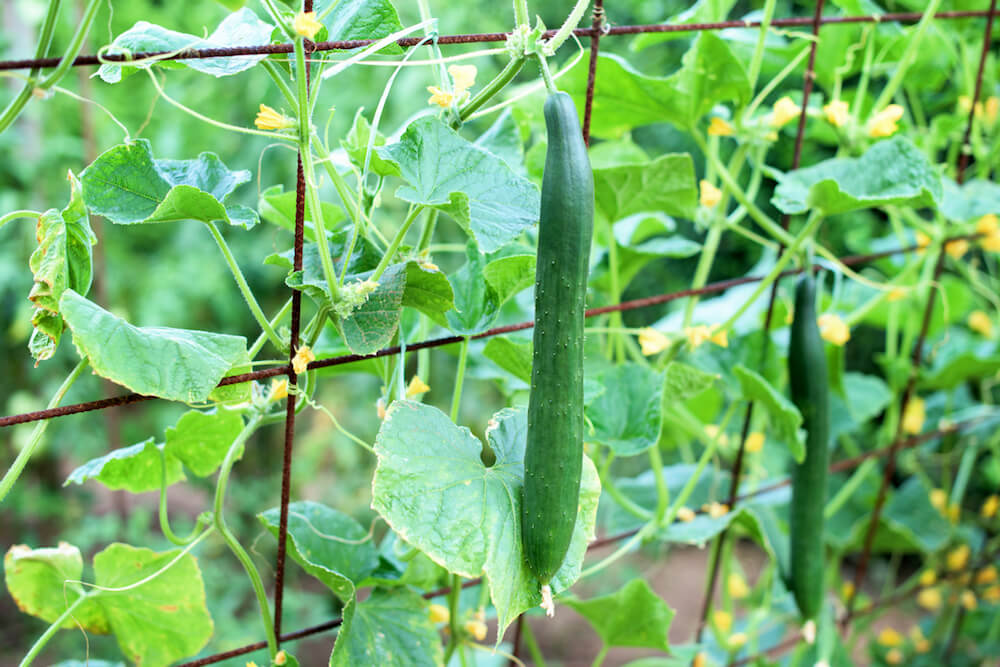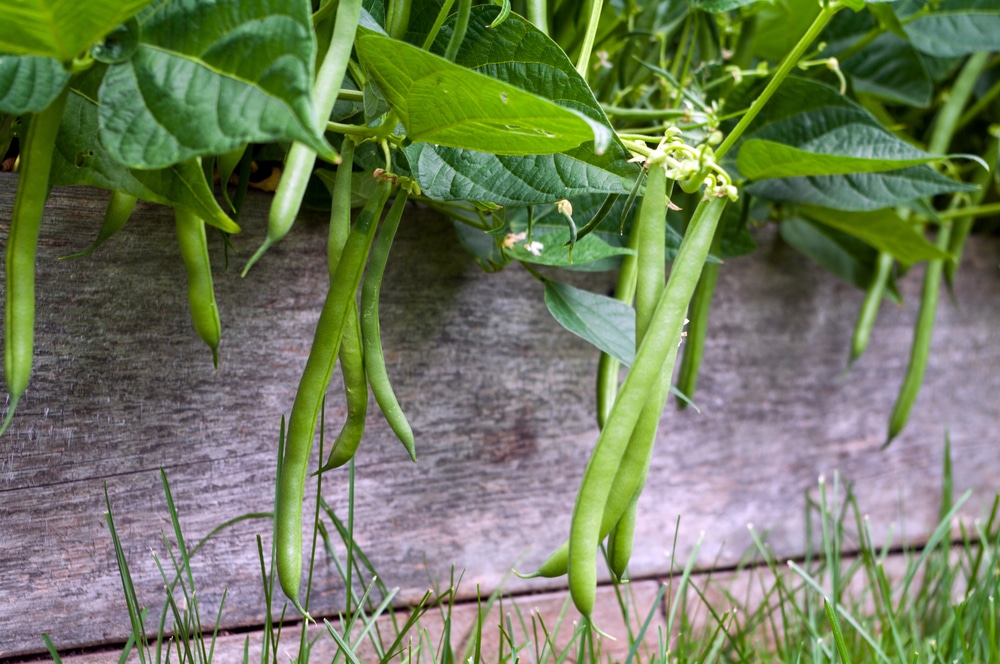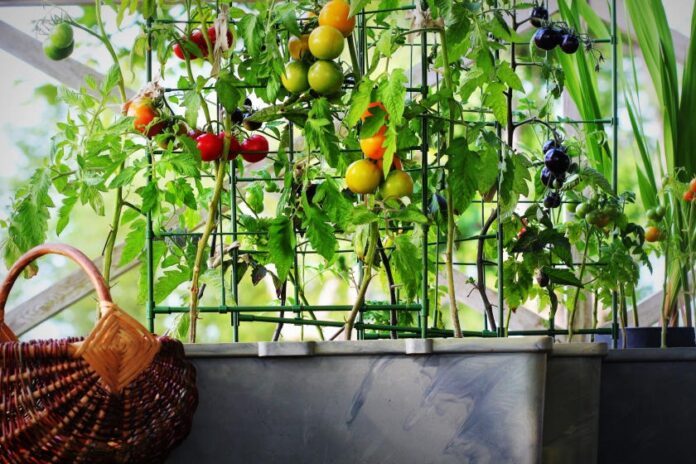Vertical gardening is the way to go if you love gardening but have limited space. Rather than take up space horizontally, the plants grow upwards in a vertical direction. As a result, there’s fewer plant problems and more benefits for gardeners.
Benefits of vertical gardening

One of the biggest problems when you are gardening is the limited space. After all, there is only so much space you can provide for just plants. If you are experiencing this problem, then having a vertical garden might be the answer for you.
- Vertical gardening uses the available space provided in air space, walls, and ceilings.
- Because of using unorthodox places for growing, what was empty and useless before has become useful space!
- Not only that, but vertical gardening can also beautify an empty space while also concealing hideous marks (if your home has any).
- It’s also relatively low maintenance, as problems such as weeds, ground-dwelling pests, and soilborne diseases basically become non-existent.
- Trellising climbing plants prevents the spread of soilborne fungus and disease, making the plants that much healthier. Vining vegetables and flowers also won’t be prone to rotting like when left behind on the ground.
- Airflow is one of the reasons why vertical gardening is great for anyone. Plants that grow upwards allows for better air circulation around the plants in general. As a result, leaves will dry out faster, preventing the problems with fungus and disease.
- Another benefit to vertical gardening is that it yields more harvests than typical horizontally grown plants. Vining crops gives more produce than bush or patio varieties and vertical containers provide more growing space than a traditional garden plot.
- Vertically grown plants are easier to harvest, as crops are made to be eye-level which is ideal for people with bad backs.
- Food grown vertically is also much cleaner than plants on the ground. Soil is less likely to splash on it other than food grown vertically in container gardens, or by trellising the vines.
Vertical Plants to Grow
Cucumbers

Cucumbers are one of the vegetables that is versatile to eat. Especially for the summertime, you can add it to a Greek salad, a smoothie, or add some fresh, healthy goodness to sandwiches or wraps.
How to grow:
Cucumbers are plants that requires plenty of sunshine, fertile soil and good moisture. So choose a spot in your garden that receives the most sun.
Particularly for your vertical garden, opt for the vining variety. It can be trained to climb up trellises and structures and produce more harvest than the bush varieties. Given a space to climb, vining cucumbers do quite well. All you would need to do is prepare the structure, such as a trellis, but that there’s plenty of space so it’s able to spread out and grow.
Green beans

Green beans, also known as string beans or snap beans are fun to grow as it comes in a variety of colors like purple and yellow. Choose for pole style bean instead of bush beans, since it will climb.
How to grow:
If you want to grow it in the summer, opt for planting seedlings instead of seeds. Pole beans, in particular, will need plenty of sunlight and takes around 2 months for it to harvest.
Pole beans are rather low maintenance compared to other types of plants and mature quickly at about 55 to 60 days. Plus, it yields more beans than bush beans do, while taking up less space. As you can easily train it to grow vertically on a pole, it’s aptly named ‘pole bean’. On the other hand, bush beans are known for growing in a compact way and do well in small spaces.
Peas

Source: GrowVeg
Looking for something to brighten your vertical garden?
Sugar snap peas is what you may be looking for, since it has the ability to brighten an edible garden space with their purple and pink flowers. Other than that, it’s fun for children to eat because you can eat the whole pod into your mouth or have the choice of breaking it open to enjoy the small chartreuse colored peas.
How to grow:
Pease grow best in mild climates, but still need lots of sunlight to thrive. As this variety of plant grows upwards, you’ll need prepare a structure for the vines to spread out while supporting the plant. Additionally, it has little tendrils which reach out and attach to whatever it comes into contact with so there is no need to be trained to use a trellis.
Tomatoes

Tomatoes are another plant variety you can choose to brighten your space. Luckily, there’s a plethora of types to choose from, with varying sizes, shapes, and a rainbow of colors. If you are confused on what to pick, select varieties that grow well in your area based on the climate.
How to grow:
The hot summers of Indonesia are perfect to grow tomatoes, as it thrives in the sun and heat, so select a place where you know there will be ample sunlight. Other than that, pick a deep and wide container at least 6 inches deep so the roots have plenty of space to anchor into the dirt. Plant in well-drained soil with added compost, and water often but be careful not to create soggy soil.
An important aspect of growing tomatoes is that it needs good support, so prepare poles, stakes, or trellises. One of the best ways to provide support for tomatoes is to place a stake in your container next to your tomato plant that’s at least 3 feet long. As your tomato plant grows and requires more and more support, very lightly attach the tomato plant to the stake using a string or zip tie. This prevents it from falling over and becoming weakened due to diseases.





